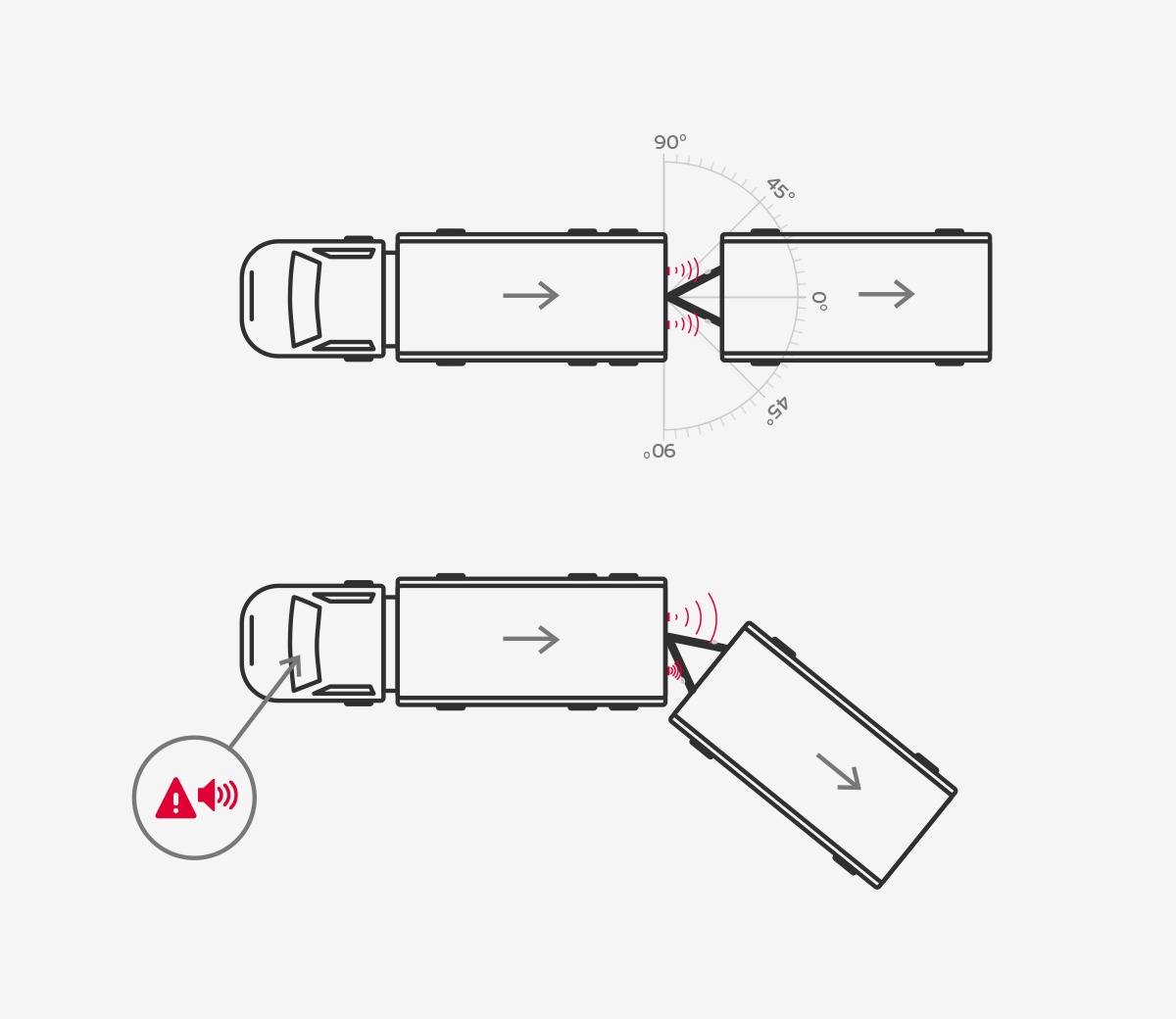New jackknife warning system
Jackknifing is a dangerous situation in which not only the vehicle is at risk of damage, but which also poses serious risk to drivers and other road users – especially if the driver is unable to rectify the situation. But the next generation of warning systems is on the way and will significantly improve safety.
Jackknife warning – innovation for the sake of safety
At VBG we work tirelessly to develop new innovative solutions aimed at making things easier for anyone who comes into contact with our coupling solutions. Safety and responsibility are our main watchwords during the development process.
One of our development projects, which has been in progress for several years and is now in its final phase, is a jackknife warning system. The system warns the driver in good time in the event of jackknifing so that the driver is able to rectify the situation and regain control. This not only increases safety for the driver and other road users, but also prevents expensive damage to the vehicle rig.
New technology providing new level of safety
The new system is based on radar technology, which produces a robust and reliable solution. Radar sensors in combination with reflectors on the drawbar enable highly precise angle measurement. It can also be used for guiding when coupling a trailer. The feature/technology will also be used to detect obstructions behind the vehicle, such as loading docks or people.
The warning signals for jackknifing and rear obstructions have different sounds in the cab. The driver will also receive an alert if the system is not working. For optimal functionality and user-friendliness, the system will communicate and interact with VBG’s user interface and other components, such as couplings and underrun protection.

We value your feedback
Feel free to contact us if you have any questions, concerns or other viewpoints. You can contribute to the development of the next generation of coupling solutions. Your opinion is important to us!